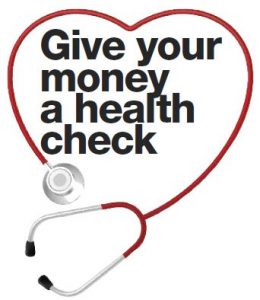In the second of two parts, John Lowe the Money Doctor reveals in simple language all you need to know about life and health protection. It is important to know the language or jargon and whether the taking out of such a policy is either relevant or necessary to you and your family. In this part, I cover the four main areas of life and health
- Income protection
- Critical or Serious Illness Cover
- Life cover
- Private medical insurance
Income protection cover
If you are of working age then the chances of you being off work for a prolonged period of time due to illness or an accident are substantially greater than the chances of you dying.
It is for this reason that income protection cover is so valuable. As its name suggests, it is designed to replace your income if a disability or serious illness prevents you from working. If you are in a company pension scheme – or if you have arranged your own pension – you should check to see what cover you have already since it is sometimes included.
Incidentally, most policies generally pay out 75% of your monthly income less any social welfare benefits after the policyholder has been off work for a minimum of 13 weeks unless hospitalised. You could even opt for pay out from day one OR if you want to reduce the cost you can opt for a policy that doesn’t pay out until you have been off work for 26 weeks. Most important of all, it is the ONLY form of insurance outside of non-assignable life cover within a pension plan that attracts tax relief at your marginal rate on premiums paid.
Critical or serious illness cover
Horrible as it is to think about, imagine being diagnosed with a serious illness. I am talking about something like cancer, heart disease or multiple sclerosis. Naturally, under the circumstances, you might need special care and/or want to make life changes. This is where critical or serious illness insurance comes in. Providing you survive for two weeks after your diagnosis you will receive a lump sum of tax-free money to spend however you wish. Clearly, such a sum would allow you to pay off your debts, seek specialist treatment or in some other way ensure that you didn’t have any financial problems.
It is important to remember that this cover provides you with a lump sum – not an income and should last you up to two years.
Life cover
There are several different types of life cover -but they are all designed to do one thing. For a relatively low monthly payment they provide a lump sum if the person insured dies. The lump sum is tax free and may go into the insured’s estate or may be directly payable to a nominated person (such as his or her spouse).
In the case of more expensive life cover the policy can have a cash-in value after a period of time has elapsed. The cost of life cover will be determined by your age, gender, and lifestyle. If you are a non-smoker and don’t drink heavily you will save quite a bit of money. There are two basic types of life cover :
Term insurance
As its name implies, term insurance is available for a pre-agreed period of time – usually a minimum of ten years. It is mandatory when you take out most interest-only home loans.
It is particularly useful for people with a temporary need. For instance, if you have young children you and your spouse might take out a 20-year plan giving you protection until your family have grown up and left home. By the same token, you might take out a policy that would pay off the exact amount of your mortgage.
Dual life or joint life ? Dual means both parties will receive a pay out if they die irrespective of who dies first. Joint life will only pay out on the first party to die. The additional cost of dual life cover is minimal and some life companies will offer dual at the same price as joint life.
These are the different types of cover you can buy :
Level term. The amount of cover remains the same (level) for the agreed period. For instance, you might take out € 50,000 of cover for ten years. The cost will remain fixed for the same period, too.
Decreasing term. The amount of cover drops (decreases) every year. For instance, you might take out € 50,000 of cover that drops to € 48,000 in the second year, € 45,000 in the third year and so forth. Such policies are almost always taken out in conjunction with mortgages in order to pay off the outstanding debt should the insured die. Note this sort of cover cannot be extended or increased in value once you have taken it out. It Is the cheapest type of life cover to take out.
Convertible term. Although the cover is for a set period of time, a convertible policy will allow you to extend your insurance for a further period regardless of your health. This is a very useful feature because it means that if you suffer some health problem you won’t be denied life cover because of it. In fact, if you extend the policy, the insurance company will charge you the same premium as if you were perfectly healthy. Convertible term cover is normally not much more expensive than level term cover and – therefore – is usually the better option.
Whole of life assurance
There are two benefits to taking out a whole of life assurance plan. Firstly, providing you carry on making your monthly payments the plan is guaranteed to pay out. In other words, you are covered for the whole of your life. Secondly, there can be an investment element to the cover. So if you decide to cancel the plan you’ll receive back a lump sum.
There are various features you can opt for with whole of life cover. You can vary the balance between actual life cover and the investment element, for instance. Also you can decide to end the cover at a particular point – when you retire, for instance. Some whole of life policies are designed to meet inheritance tax liabilities.
Whole of life cover, as you can imagine, is more expensive than term cover.
Private medical insurance
This type of insurance is designed to meet some or all of your medical bills if you opt to go for private treatment.
Only three companies provide this cover in Ireland. VHI (Voluntary Health Insurance), Irish Life Health ( incorporating Aviva and GloHealth ) and LAYA Healthcare. Between them they offer a wide range of plans with an array of options, conditions and limits. You can compare all the plans on www.hia.ie ( Health Insurance Authority ) Discounts can be available if you join through a ‘group’ – your employer, for instance, or a credit union.
That is the full gamut of life and health options. You should review your policies every year, shop around and certainly take expert financial advice as it can be a minefield. Email me for further information.

